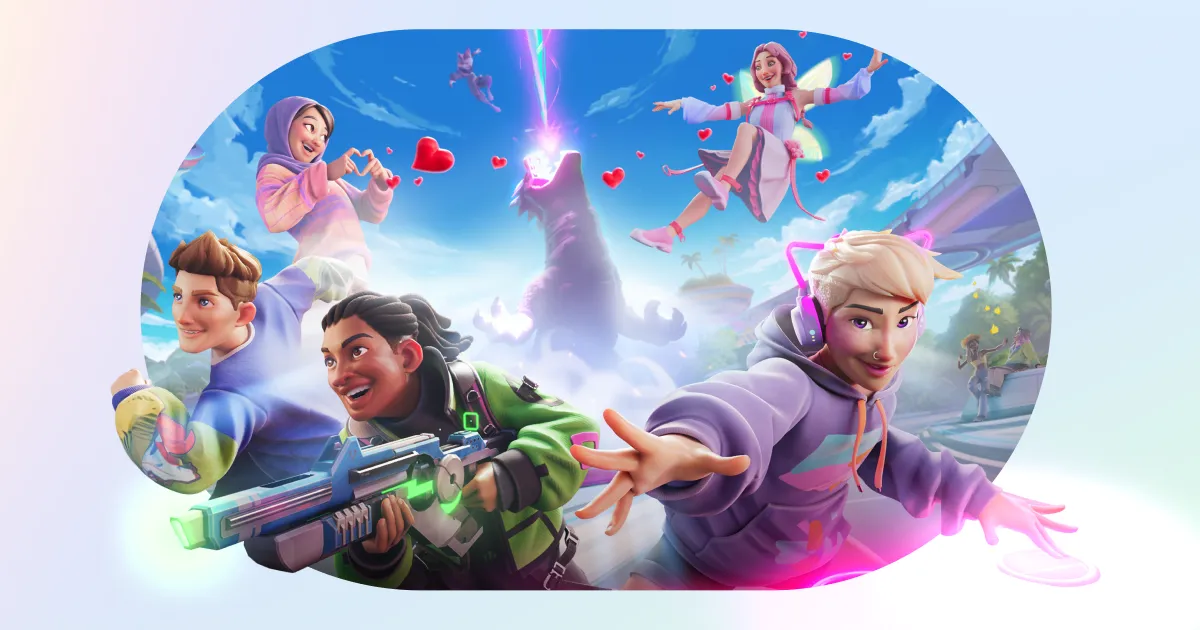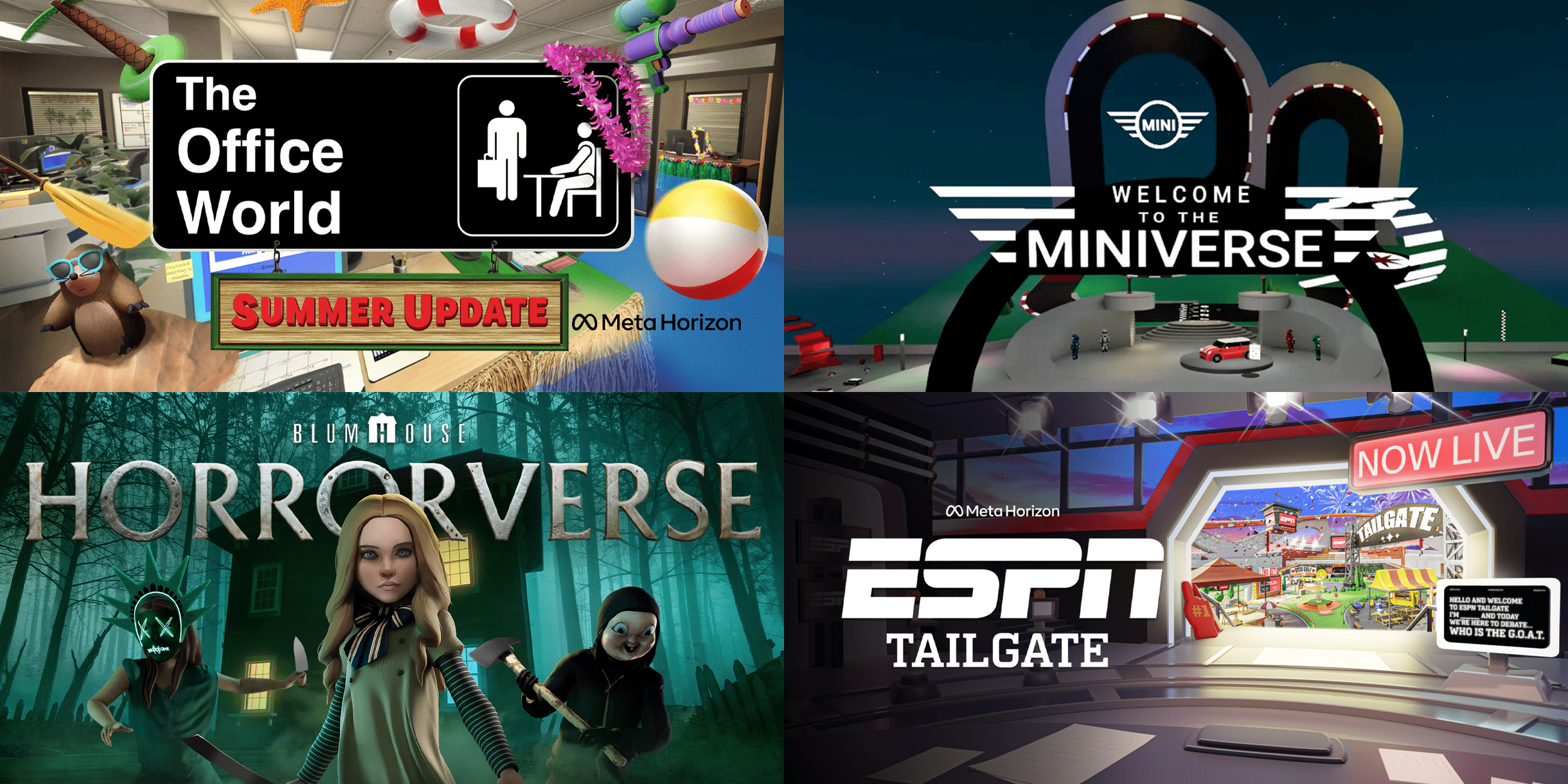Since its launch in 2021, Meta Horizon Worlds has been at the forefront of Meta’s bold move into the metaverse, aiming to redefine social interaction in the digital age. The core vision "building the next generation of virtual social experiences" drives the platform to constantly evolve, enriching how we connect, collaborate, and create in virtual spaces.

Through personalized avatars, Horizon Worlds invites users into immersive, open-ended virtual worlds. Here, participants don't just passively observe; they actively engage in gameplay, produce original content, host dynamic events, and even design their unique virtual environments. Meta Horizon Worlds focuses on three key growth areas below.
Technical Innovation
Constant improvements in graphical rendering are enhancing realism and immersion. Simultaneously, Meta is optimizing cross-platform compatibility - like seamless integration between Quest VR headsets, mobile and desktop interfaces - to broaden accessibility.
The introduction of AI-driven toolkits, such as Mesh Gen for effortless 3D modeling and Skybox Gen for customizing virtual skies, empowers users by dramatically lowering barriers to creative expression.

Ecosystem Expansion
Meta continues to foster a vibrant, inclusive digital community by attracting a diverse range of creators and renowned brands. This strategic expansion enriches the platform’s content landscape, offering users fresh experiences and varied virtual worlds to explore.
Monetisation and Strategic Partnerships
From virtual products trading to brand collaborations, Meta Horizon Worlds continues to refine its metaverse economy. Within this journey, branded experiences are emerging as one of the platform’s most promising growth opportunities, allowing brands to craft unique, immersive interactions tailored specifically for their audiences.

Branded Experiences are Driving Growth in Meta Horizon Worlds
Branded experiences in Meta Horizon Worlds represent an innovative approach where real-world IPs, products, and services are transformed into interactive virtual scenarios. This not only creates fresh marketing opportunities for brands but also offers immersive, captivating content for users. Let’s explore how several globally recognised brands are pioneering this exciting new frontier:
The Office World
Fans can now explore the office in a unique virtual setting. Interactive mini-games let users earn "Schrute Bucks" to personalise their virtual desks enhancing fan engagement through nostalgia and interaction.
ESPN Tailgate
ESPN brings sports to the metaverse, featuring interactive mini-games like frisbee golf and hotdog-eating contests. Fans can even step into the shoes of an ESPN anchor, watch immersive sports content, and discuss games live, pushing the boundaries of virtual social experiences.
MINIVerse
The virtual go-kart experience in Horizon Worlds boosted brand awareness and affinity through immersive engagement. MINI lovers can race and hang out with no speed limits.
Sabrina Carpenter's Meta Horizon VR Concert
By harnessing the immersive virtual environment of Meta's Horizon Worlds, the event delivered a one-of-a-kind music experience, fostering unprecedented real-time interaction between the artist and her global fanbase.
Blumhouse Horrorverse
Experience terrifying mini-games and experiences that will test your courage, including the intense Survival Lockdown game where you'll fight for survival.
The Next Frontier of Horizon Worlds: Unlocking Immersive Brand Marketing
Meta’s Horizon Worlds is emerging as a unique platform for immersive social experiences - and for brands, it offers distinct strategic value across several dimensions:
Breaking Physical Boundaries Through Immersive Storytelling
In Horizon Worlds, brands can go beyond traditional advertising by building fully immersive narrative spaces where users don't just watch a story - they live it. Instead of passively consuming content, users can actively experience brand stories firsthand. Brands can also leverage 3D scanning technologies to recreate real-world spaces (such as flagship stores, historic sites, or model homes) inside the virtual world. This allows users to explore branded environments without the limitations of geography.
Examples include:
- Real Estate: Scanning homes for sale, enabling users to tour properties in VR and interact with agents in real time.
- Museums: Creating digital twins of exhibitions, allowing global audiences to visit and even participate in virtual curation activities.
User-Generated Content (UGC) as a Growth Engine
Horizon Worlds places a strong emphasis on UGC, empowering users to create and share their own content. For brands, this shifts marketing from a traditional top-down approach to a co-creation and organic amplification model.
Once a branded world or item is launched, users can remix, expand, and spread it:
- Players might capture screenshots or livestream their experiences inside branded spaces, sharing them organically across social platforms.
- Brands can also host virtual creation contests, inviting users to build mini-scenes or decorations related to the brand with rewards for outstanding entries - sparking viral fan engagement.
Because all content in Horizon Worlds is created within the platform - much like Roblox - there’s a natural opportunity to nurture a creator-driven community. By supporting talented creators and collaborating on experiences, brands can expand their influence while deepening user affinity and brand loyalty.
UGC ecosystems also mean brand worlds stay dynamic and fresh: active communities continually generate new topics, fan videos, and creative spins, helping maintain long-tail engagement beyond the initial campaign launch.
Data-Driven Insights and Precision Marketing
Every user interaction within the metaverse can be digitized and transformed into actionable data assets. Unlike offline events where user behaviour is hard to track, in Horizon Worlds, brands gain comprehensive behavioral analytics - including:
- How many users visited the branded world
- How long they stayed
- Which elements they interacted with
- Tasks completed
These insights are extremely valuable for optimizing both product design and marketing strategies. By analyzing interaction data, brands can uncover user preferences - such as which product zones attract the most attention or which mini-games are most popular - and iterate accordingly.
Opening New Pathways to Gen Z and Gen Alpha
Gen Z and Gen Alpha, as true digital natives, are quickly becoming major consumer forces. Research shows that over half of Gen Z believes their virtual avatar’s fashion choices are more important than their physical ones, and 84% say they are more likely to consider purchasing a real-world product after trying it virtually.
This highlights how critically young generations value brand interactions within digital experiences - positioning the metaverse as a key influence on their purchasing decisions.
Meta’s Horizon Worlds represents a powerful new frontier for brand marketing, offering deep immersion, co-creation opportunities, and data intelligence. Yet it also comes with challenges around user growth and maintaining a vibrant content ecosystem. It's a brand new creative landscape, filled with untapped opportunities. For marketers, the roadmap is clear: Think boldly. Start small. Iterate fast.
Byten21 is a London-based creative production studio specialising in branded games and worlds in Meta Horizon Worlds. We design, build, and launch interactive brand experiences - from immersive campaigns to full social multiplayer games - for global clients.
As a two-time winner in Meta’s Horizon Worlds Creator Competitions, including Best Social Experience in the Mobile Genre Showdown, we combine award-winning gameplay with brand storytelling.
Looking for a studio to create your branded Horizon Worlds experience? Let’s talk.

